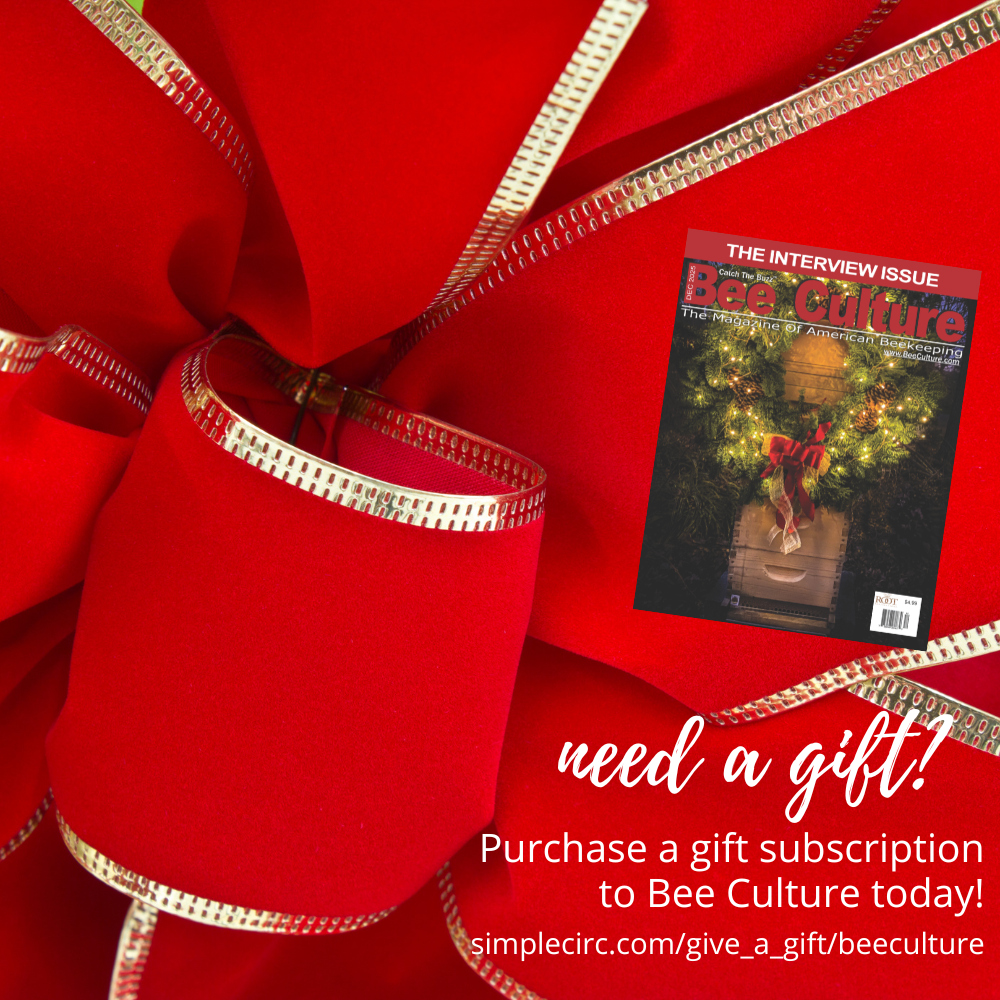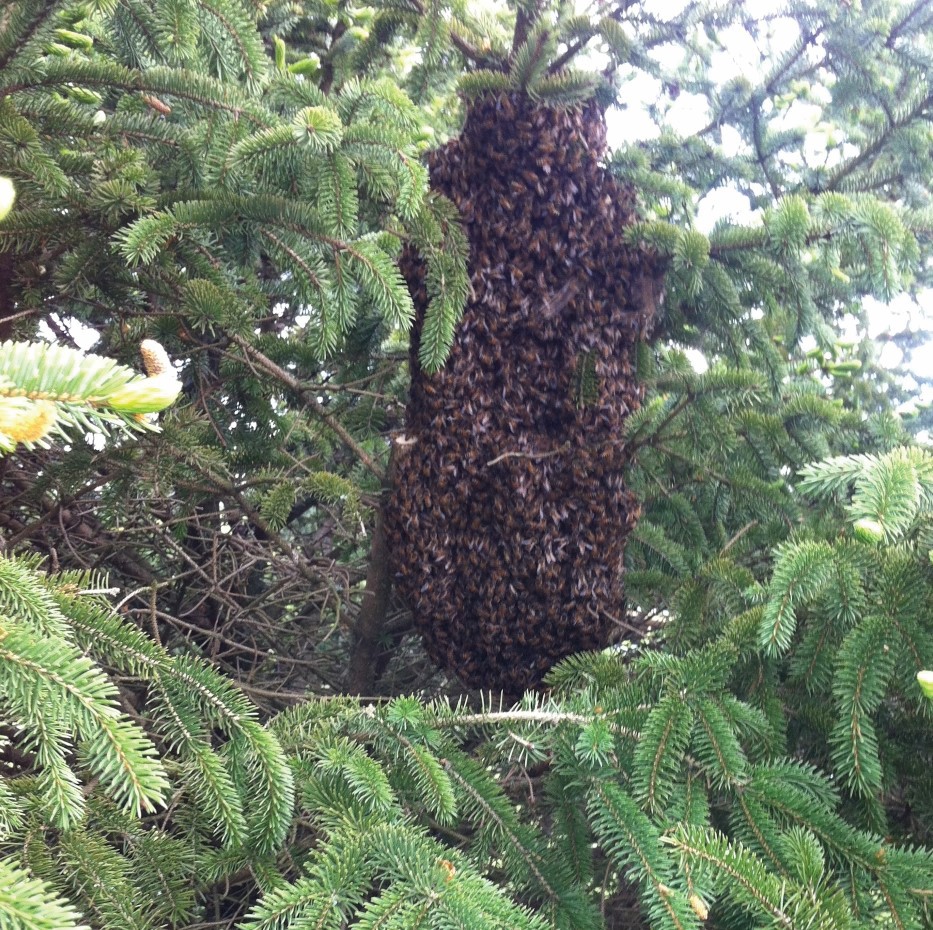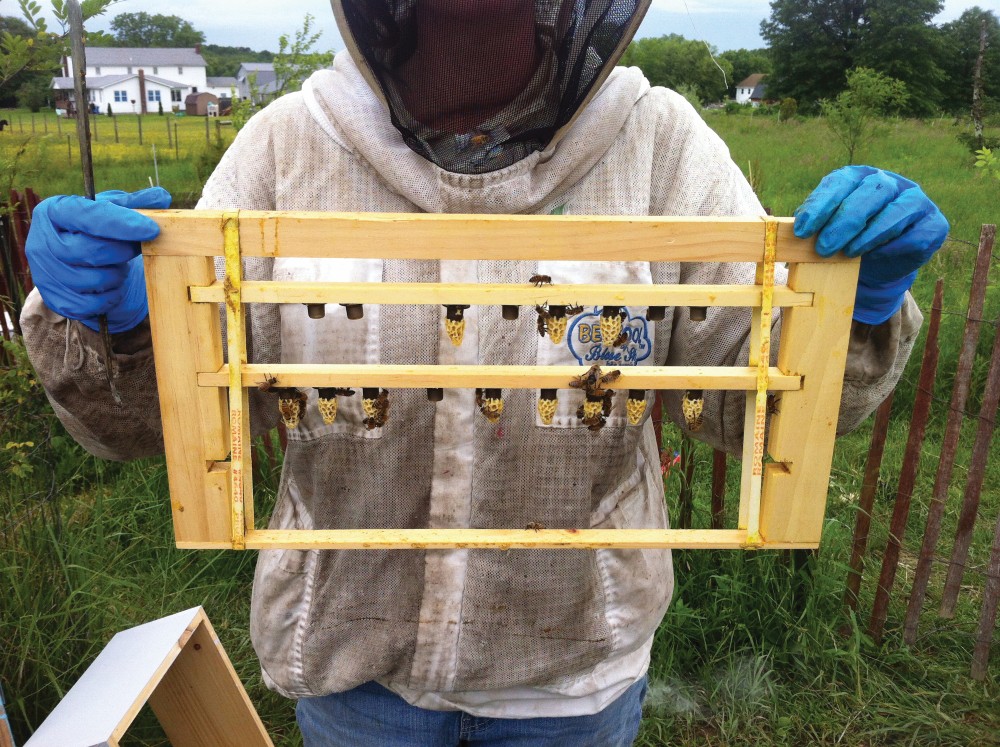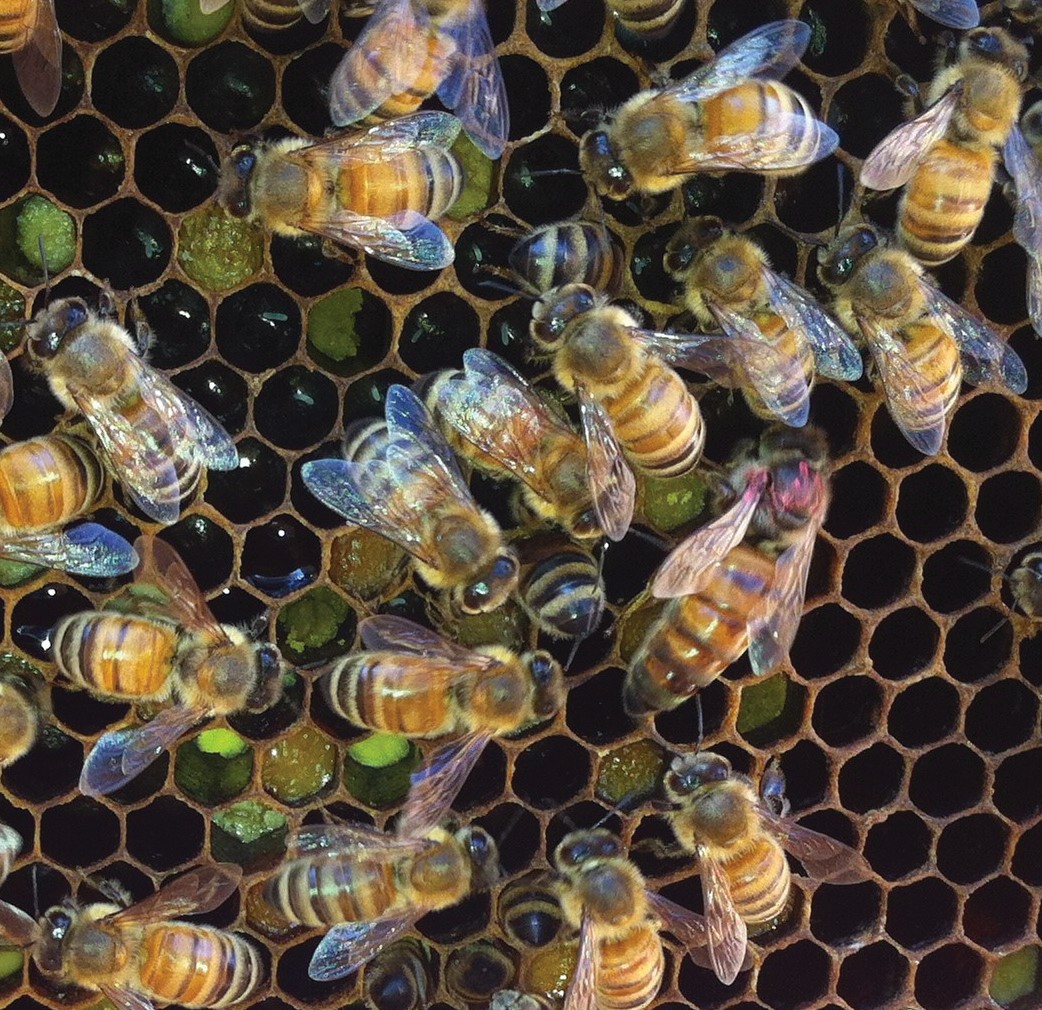Patricia Harness
I have some great queens, three sets of sisters. Is it overly optimistic to expect their daughters to be great?
What makes a great queen?
First, I’m going to define a great queen. Any great queen must lay prolifically, which will only happen if she was properly reared every step of the way. As noted on page 35 of Larry Connor’s book, Increase Essentials, a small population should not be used for starting the queen cell from a frame with eggs, because the resulting queens “are usually small, produce fewer eggs and face supersedure by the bees.” I have also found that newly-laying queens which are moved too early, before they have reached three weeks of age or so, are at risk of supersedure in the new colony. Those factors are under my control, so let’s call them a given.
A great queen isn’t just prolific – she must produce gentle children, have a reasonable threshold before swarming is triggered, and produce lots of healthy foragers. There is a heritable component to those behaviors, which means I have a chance of continuing to have great queens if I select mothers with those traits.
I’d like to be able to select fathers with those traits too. However, drones fly in from the surrounding area to find my queens (Koeniger, 1986). I will be playing the numbers game – I will be trying to flood the area with my drones. I will have two colonies about 1 mile away, at each of the points of the compass, surrounding my mating apiary. It’s not as effective as Instrumental Insemination, where you select drones from a known colony, but that’s not part of my Five Year Plan.
Does all the work of tracking queen performance lead to a payoff?
Can you even predict what the daughter queens will be like? Will the next generation just be a total surprise?
For honey production, if you select the colonies which were the best, their daughters will also be better (Bar-Cohen et al, 1978, Calderone and Fondrk, 1991). The researchers in the 1991 study compared honey production between the descendants of the three lowest producers vs. those of the good honey producers. At the third generation out, they found the good honey producers were still noticeably better than the slacker colonies.
What this means for me, in my apiary? I should be able to keep my honey production where it is, by selecting from the top honey producers and eliminating the slackers. But I have no illusions that I will be creating a super-honey-collecting bee. I’m just looking to preserve the good traits that I already have.
What about defensiveness? Yes, this is heritable. It’s not as simple as “Gentle like Mom” or “Fathers control defensiveness” (Guzma-Novoa et al, 2005). I don’t see much variation in my colonies’ defensiveness – because they are all pretty gentle. This likely means there are not many mean colonies around. To decrease the odds that drones from a distant defensive colony could influence my bees’ temperament, I will flood the area with my gentle drones, and give my queens away to my neighbors.
What about swarming? Is it even possible to select for hives that, if supered appropriately, will almost always stay in the box? A lot of work has been done by Danish beekeepers to select for low-swarming queens (Holm, 2010). And it worked. Queen Breeding and Genetics has chronicled the Danish Beekeeper’s Association’s work and findings. They state clearly that swarming is worth selecting against, and that the efforts will pay off through less swarmy daughters.
Brother Adam also took meticulous notes of the many crosses made from various races in his breeding program. In the section titled “The Primary Qualities for Performance”, Brother Adam included “Disinclination to Swarm” (Adam, 1987). He was quite vehement that breeding can improve the apiary’s productivity by selecting against swarmy queens.
Chickabuzz Apiary does its own Swarming Selection Experiment
And I have a story of selection against swarming to share from my own apiary.
In 2018, I got eight daughters from a great queen. Her daughters were a mixed bag for making honey and swarming. They were all gentle – but five of the eight were swarmy stinkers, with some even swarming in both the Spring AND the Fall. And then the following Spring. That’s a 63% swarming rate.
So along comes 2019, and I have three queens to choose from who did not swarm. I grafted from them, and raised 23 daughters as best as I could, and then – well, then I had to check carefully for evidence of swarming in their daughters, which is a lot of work! But only two of those 23 daughter queens swarmed, which is down to a 10% swarming rate.
Alert: checking for swarming is a commitment
After a hive swarms, it still has a lot of bees in it! It’s actually a challenge to detect that half of the population has departed. And seven days or so after the hive swarmed, the population will actually be close to where it was before swarming – due to the capped brood emerging. And a strong hive which swarmed will usually remove the queen cells before the new queen even starts laying eggs.
The only way I can be sure a given hive did not swarm since my last inspection is if I see brood in all stages. Eggs, larvae, and lots more capped brood than eggs or larvae. This requires inspections to be no more than 14 days apart, and diligent note taking.
So here is another tale of my adventures in queen rearing. While my apiary and pool of queens is small, I’m working to make them count. I’ve taken the saying “what you select for, you get more of” to heart, and it has already paid off. It’s fun to work bees that are gentle, that want to store honey, and that won’t swarm (unless I mismanage them). Working a hive that does not have those traits is a chore.
References
Adam, B. (1987). Breeding the Honeybee. Northern Bee Books. Mytholmroyd, Hebden Bridge.
Bar-Cohen R., G. Alpern, R. Bar-Anan. (1978) Progeny testing and selecting Italian queens for brood and area and honey production. Apidologie 9: 95-100.
Calderone NW, and MK Fondrk. (1991). Selection for high and low colony weight gain in the honey bee, Apis mellifera, using selected queens and random males. Apidologie 22:49-60.
Connor, L. (2003). How Many Drone Colonies Do You Need? Bee Culture (Dec): 29-32.
Conner, L. (2010). Bee Culture. Queen Problems: A review of what can go wrong, why and what can be done. Bee Culture (Nov): 27-30.
Conner, L. (2014). Increase Essentials. Wicwas Press, LLC. Kalamazoo, MI.
Holm, E. 2010. (2010). Queen Breeding and Genetics: How to get better bees. Northern Bee Books. Mytholmroyd, Hebden Bridge.
Koeniger, G. 1986. Chapter 10. Reproduction and Mating Behavior. In Bee Genetics and Breeding (ed. Rinderer, T. E.), Academic Press. Orlando, Fl.
Koeniger N., G. Koeniger, H. Pechhacker 2005. The nearer the better? Drones (Apis mellifera) prefer nearer drone congregation areas. Insectes Soc. 52: 31-35.













